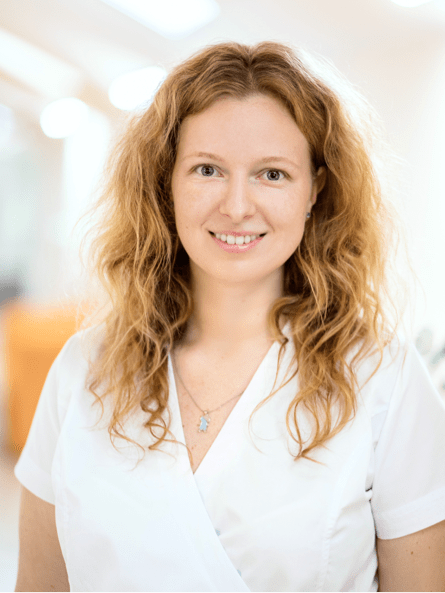Rhinoplasty combines two types of surgical intervention – septoplasty (correction of the curvature of the nasal septum) and rhinoplasty (correction of the external shape of the nose).
The operation is performed under general anesthesia in two stages with the participation of an otorhinolaryngologist and a plastic surgeon. The first aligns the septum, restores nasal breathing and removes a small part of the cartilage, which in the second stage is used by the plastic surgeon as additional material to shape the back and tip of the external nose and give the external nose the correct shape.
There is primary and repeated rhinoseptoplasty. Primary means that neither rhinoplasty, nor septoplasty, nor rhinoseptoplasty were performed before, and repeated – that one of these operations has already been performed in the past. Carrying out repeated rhinoseptoplasty after surgery is a longer intervention that has a longer rehabilitation period and many nuances. So, when a septoplasty has already been performed and the excess part of the cartilage has been removed, the surgeon needs to take the cartilage tissue that is missing for the plastic from a rib or an ear.
Closed and open rhinoseptoplasty are also distinguished. They differ only in the type of incision made to gain access to the body’s structures. The choice of method is carried out by surgeons before the operation, according to the peculiarities of the patient’s anatomy.
Functional rhinoseptoplasty is one of the most popular operations for which patients turn to the VIRTUS clinic. The goal of our surgeons is not only to provide the patient with an aesthetically attractive nose, but also to solve the problem of impaired nasal breathing.
Indications and contraindications for rhinoseptoplasty
The main indications for rhinoseptoplasty are the curvature of the nasal septum and the unaesthetic shape of the external nose. In turn, the curvature of the septum can lead to the development of the following conditions, which are often addressed by patients:
- violation of nasal breathing;
- ear congestion;
- frequent snoring;
- frequent runny nose, sinusitis and inflammatory processes.
These complaints lead the patient to an initial consultation with an ENT surgeon. If the patient is also dissatisfied with the shape of his external nose, the doctor refers him to a plastic surgeon. Conversely, if a patient comes to a plastic surgeon with an aesthetic problem, but he also has a distorted nasal septum, the plastic surgeon refers him to an otorhinolaryngologist. After that, a general decision is made regarding the expediency of rhinoseptoplasty.
There are also contraindications to rhinoseptoplasty – the operation is not performed on patients under the age of 18, pregnant women, women who are breastfeeding and people who have diseases associated with the risk of thrombosis.

The result of rhinoseptoplasty
The result of rhinoseptoplasty is an aesthetically attractive shape of the external nose and nasal septum with restoration of normal nasal breathing.
In exceptional cases, additional rhinoplasty may be required. The decision on the need to conduct it is made only six months after full recovery.
Rehabilitation after rhinoseptoplasty
On the seventh day after rhinoseptoplasty, the plastic surgeon removes the sutures, and the ENT surgeon removes the splints. Next, the patient should come for a consultation with both specialists after 2 weeks, 1 month, 3 months and 6 months.
During the rehabilitation period after rhinoseptoplasty, the following are prohibited:
- intensive physical activity – 3 months;
- wearing heavy glasses on the bridge of the nose – 3 months;
- air flights, visits to the sauna, bathhouse, swimming pool and other places associated with increased pressure – 1 month;
- consumption of alcoholic beverages – 1 week (to avoid worsening of edema).
It is important to avoid any risk of injury, which will allow you to preserve the result of nose shape correction for life.
What will happen if the rhinoseptoplasty is not performed?
If septorhinoplasty is not performed, there is a risk of increased nasal breathing, which may affect the general state of health. In addition, for many, the unaesthetic shape of the nose is a psychological problem that leads to complexes and stress.

























 107
107  2 min.
2 min.








